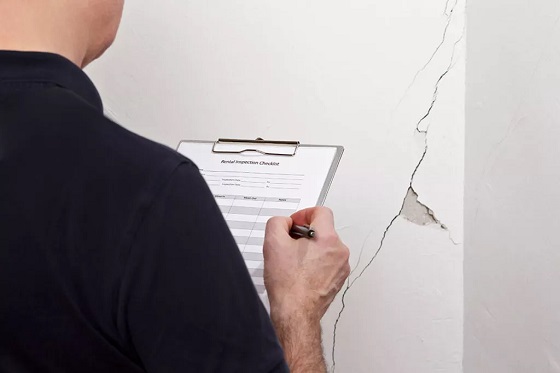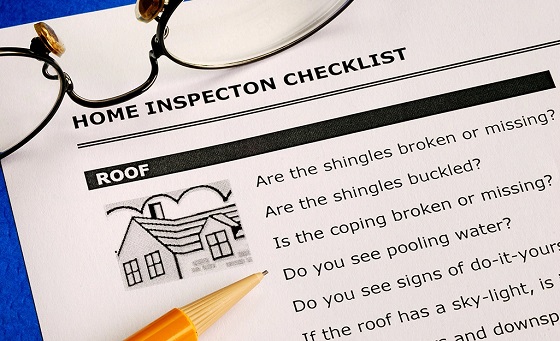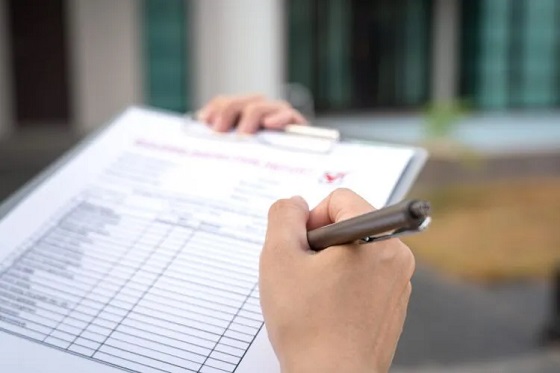It’s not uncommon for many people to confuse a rental property inspection with a home inspection. An inspection is an inspection, and both types involve a comprehensive evaluation of a residential dwelling’s condition and functionality to identify any existing issues, potential hazards, or areas requiring maintenance. The inspection provides valuable insights for concerned parties, aiding in informed decision-making regarding property transactions.
Why the confusion?
The confusion between a rental property inspection and a home inspection can arise due to several factors, often stemming from a lack of clear understanding of the distinct purposes and processes associated with each type of inspection. Here are some reasons why this confusion might occur:
- Similar Terminology: The terms “home inspection” and “property inspection” are often used interchangeably, contributing to confusion. Additionally, both rental properties and homes can be referred to simply as “properties.”
- Common Elements: Both rental properties and homes share common elements that are typically assessed during an inspection, such as the condition of the structure, plumbing, electrical systems, and other features. This overlap in the inspection criteria can make it seem like the inspections serve the same purpose.
- Limited Awareness: People, especially those new to real estate transactions, may not be fully aware of the differences between a rental property inspection and a home inspection. This lack of awareness can lead to a generalized understanding that any property inspection involves assessing the overall condition of a dwelling.
- Role of Inspectors: While a licensed home inspector is required for home inspections, there may be instances when one will be needed for a rental property inspection, further blurring the lines. For instance, a qualified home inspector may be hired to assess the condition of a rental property if a property owner rents out to Section 8 beneficiaries.
It’s crucial for individuals involved in real estate transactions, whether as buyers, sellers, landlords, or tenants, to be clear about the purpose of the inspection being conducted. While a home inspection is typically associated with the sale of a residential property, a rental property inspection is more focused on assessing the property’s condition before or after a tenant occupies it.
Understanding the specific goals of each type of inspection can help prevent confusion and ensure that the right information is being gathered for the relevant real estate transaction.
Differences between a rental property inspection and a home inspection
A rental property inspection and a home inspection serve different purposes and are conducted in different contexts. Here are the key differences between the two:
- Purpose:
- Rental Property Inspection: The primary purpose of a rental property inspection is to assess the condition of a property that is being rented out. It may occur at various times, including before a new tenant moves in, during the lease term, and after a tenant moves out. The goal is to document the property’s condition, identify any maintenance or repair needs, and establish a baseline for comparison in the future.
- Home Inspection: A home inspection is typically conducted during the process of buying or selling a home. The purpose is to provide a thorough examination of the home’s structural and mechanical components, including the roof, foundation, plumbing, electrical systems, and more. The results of a home inspection help buyers make informed decisions about the condition of the property before finalizing a purchase.
- Timing:
- Rental Property Inspection: Rental property inspections can occur at various times during a tenant’s lease, as mentioned earlier. They may be conducted periodically, such as annually or semi-annually, or in response to specific concerns or requests.
- Home Inspection: Home inspections typically take place during the home buying process, after an offer has been accepted but before the sale is finalized. It is a one-time event conducted by a professional home inspector chosen by the buyer.
- Parties Involved:
- Rental Property Inspection: The landlord or property manager typically conducts rental property inspections. The tenant may be present during the inspection, and the findings are used to address maintenance issues, document the property’s condition, and, in the case of move-out inspections, determine the return of the tenant’s security deposit.
- Home Inspection: A home inspection is usually conducted by a third-party professional home inspector hired by the buyer. The inspector provides a detailed report to the buyer, outlining the condition of the property and any issues that need attention.
While both types of inspections involve assessing a property’s condition, the context, purpose, and timing differ significantly between rental property inspections and home inspections.
Understanding rental property inspections
A rental property inspection is a process in which a landlord or property manager assesses the condition of a rental property. This inspection can occur at various times during a tenant’s lease, including before a tenant moves in (pre-tenancy inspection), during the lease term (routine inspection), and after a tenant moves out (move-out inspection).
- Pre-tenancy Inspection: This is typically conducted before a new tenant moves in. The landlord or property manager assesses the property’s condition, documents any existing damage, and ensures that everything is in working order. This inspection helps establish a baseline for the property’s condition.
- Routine Inspection: Landlords may conduct routine inspections periodically during a tenant’s lease term. These inspections are often meant to ensure that the property is well-maintained and to identify any maintenance issues that need attention. They also provide an opportunity for the landlord to address any concerns or issues the tenant may have.
- Move-out Inspection: This inspection takes place after a tenant has moved out of the property. The landlord or property manager assesses the condition of the property compared to the initial inspection, noting any damages that occurred during the tenancy. The findings can influence the return of the tenant’s security deposit.
During these inspections, it’s common for the landlord or property manager to use a checklist to systematically go through various aspects of the property, such as the condition of walls, floors, appliances, plumbing, and electrical systems. Photographs or written documentation may be used to record the property’s condition.
It’s important to note that the laws regarding rental property inspections can vary by jurisdiction, so landlords and tenants should be aware of and adhere to local regulations. Additionally, tenants typically have the right to be present during inspections, and proper notice is usually required before entering the rental unit.
Specific things landlords should check during a move-in or move-out inspection
Landlords should pay careful attention to several key aspects when inspecting rental properties to ensure they are well-maintained and compliant with lease agreements. Here’s a comprehensive list of things landlords should focus on during inspections:
Interior Inspection:
- Walls, Floors, and Ceilings:
- Check for any damage, stains, or structural issues.
- Look for signs of water damage or leaks.
- Appliances and Fixtures:
- Ensure all appliances (stove, refrigerator, dishwasher, washer/dryer) are in working order.
- Check faucets, toilets, and other fixtures for leaks or malfunctions.
- Electrical Systems:
- Test light switches and outlets.
- Check for any exposed wiring or electrical hazards.
- Plumbing:
- Inspect for leaks under sinks and around pipes.
- Check water pressure and drainage.
- Heating, Ventilation, and Air Conditioning (HVAC):
- Test heating and cooling systems.
- Replace HVAC filters regularly.
- Safety Features:
- Confirm the presence and functionality of smoke detectors and carbon monoxide detectors.
- Check fire extinguishers.
Exterior Inspection:
- Roof:
- Inspect for missing or damaged shingles.
- Check for signs of leaks or water damage.
- Windows and Doors:
- Ensure windows and doors are properly sealed and locked securely. Take note of broken door knobs and locks.
- Check for any broken or damaged glass.
- Siding and Exterior Walls:
- Inspect for damage or signs of pests.
- Check the condition of paint or siding material.
- Landscaping:
- Assess the condition of the lawn, trees, and shrubs.
- Check for any needed maintenance.
- Parking and Driveways:
- Ensure parking areas are well-maintained.
- Check for any needed repairs to driveways or walkways.
Common Areas (if applicable):
- Hallways and Staircases:
- Check for safety hazards.
- Inspect for proper lighting.
- Common Facilities (Pool, Gym, etc.):
- Ensure these areas are clean and in working order.
- Check for any needed repairs.
Thorough documentation and clear communication during these inspections help prevent disputes and establish a transparent process for both landlords and tenants. It’s essential to provide tenants with an opportunity to address concerns and to follow applicable laws and regulations regarding security deposits and property conditions.
Check out RentPost’s downloadable RESIDENTIAL RENTAL INSPECTION REPORT to help you make a thorough inspection when tenants move in or move out.
Rules to Follow When Inspecting a Rental Property
When inspecting a rental property for tenant move-in or move-out, it’s essential to follow certain do’s and don’ts to ensure a fair and transparent process.
Do’s:
- Do Schedule Inspections: Schedule inspections in advance and provide tenants with sufficient notice as required by local laws.
- Do Bring Necessary Tools: Bring tools, such as a flashlight and a camera, to thoroughly inspect all areas of the property.
- Do Follow a Checklist: Use a detailed checklist to ensure you cover all aspects of the property, both inside and outside.
- Do Be Thorough: Inspect the property thoroughly, documenting the condition of walls, floors, appliances, fixtures, and other components.
- Do Communicate with Tenants: Communicate clearly with tenants during the inspection, explaining the purpose and addressing any concerns.
- Do Document Findings: Document findings with written notes and photographs and provide tenant with a copy of the inspection report.
- Do Address Safety Issues: Resolve any safety concerns promptly, such as faulty wiring or non-functioning smoke detectors.
- Do Discuss Expectations: Discuss expectations with the tenant, especially regarding cleanliness and any necessary repairs.
- Do Review Lease Agreement: Review key terms of the lease agreement with the tenant, emphasizing responsibilities for maintenance and repairs.
Don’ts:
- Don’t Conduct Surprise Inspections: Avoid surprise inspections, as tenants are typically entitled to notice as per lease agreements and local regulations.
- Don’t Violate Privacy: Respect tenant privacy during the inspection. Do not enter areas that are not part of the lease agreement without proper notice or take photographs of personal items.
- Don’t Assume Wear and Tear: Differentiate between normal wear and tear and tenant-caused damage. Don’t automatically charge tenants for routine maintenance.
- Don’t Skip Exterior Areas: Don’t focus solely on the interior. Inspect exterior areas, including landscaping, parking, and common spaces.
- Don’t Withhold Information: Be transparent about any issues discovered during the inspection. Don’t withhold information from the tenant.
- Don’t Delay Repairs: If repairs are needed, don’t delay addressing them. Promptly communicate timelines and expectations.
- Don’t Forget Legal Requirements: Adhere to legal requirements for inspections, including notice periods and frequency.
- Don’t Use Security Deposit Unfairly: Use the security deposit fairly and within the bounds of the lease agreement. Don’t deduct for normal wear and tear.
Following these do’s and don’ts helps maintain a positive relationship between landlords and tenants and ensures a fair and transparent process during move-in and move-out inspections.
Understanding Home Inspections
A home inspection is a thorough examination of the condition of a residential property, usually conducted by a qualified professional known as a home inspector. The purpose of a home inspection is to provide the buyer with a comprehensive understanding of the property’s current state, identifying any existing issues or potential problems.
During a home inspection, the inspector assesses various aspects of the property, including:
- Structural Components: Examining the foundation, walls, roof, and other structural elements to ensure stability and integrity.
- Exterior Features: Checking the condition of siding, windows, doors, and other exterior components.
- Roofing: Assessing the roof for any damage, leaks, or the need for repairs.
- Plumbing Systems: Examining the plumbing, including pipes, fixtures, and water heaters, for leaks and functionality.
- Electrical Systems: Evaluating the electrical wiring, outlets, switches, and the main electrical panel to ensure safety and compliance.
- Heating, Ventilation, and Air Conditioning (HVAC): Checking the heating and cooling systems for proper operation.
- Interior Features: Assessing the condition of walls, ceilings, floors, doors, and windows within the house.
- Insulation and Ventilation: Ensuring proper insulation levels and ventilation to maintain energy efficiency and prevent issues like mold.
While home inspections are often associated with real estate transactions, they can also be conducted by homeowners for maintenance purposes or by sellers before listing a property. The information gathered during a home inspection is compiled into a detailed report that outlines the findings. This report can be crucial for buyers in making informed decisions about the purchase and may also serve as a negotiation tool in the home-buying process.
Do home inspections determine the value of a property?
No, the primary purpose of a home inspection is to assess the condition of a property, identifying any existing issues or potential problems. While the information gathered during a home inspection can be valuable for buyers and sellers, it is distinct from a property appraisal, which is used to determine the market value of a home.
A property appraisal is typically conducted by a licensed appraiser and involves an assessment of various factors that influence a property’s value, such as its size, location, condition, comparable sales in the area, and other market trends. The appraiser provides an estimate of the property’s current market value, which is crucial in real estate transactions, especially when securing a mortgage.
In contrast, a home inspection focuses on the physical condition of the property, highlighting issues like structural concerns, plumbing or electrical problems, roofing issues, and more. The home inspector’s report provides a detailed overview of the property’s condition, but it doesn’t assign a monetary value to the property.
Both a home inspection and a property appraisal can be important steps in the real estate process, especially for buyers and sellers. A buyer might use the findings of a home inspection to negotiate repairs or adjustments to the sale price, while a property appraisal helps establish the fair market value that lenders use when determining the maximum loan amount.
What isn’t included in a typical home inspection?
While a typical home inspection covers a broad range of components in a residential property, there are certain areas or aspects that are generally not included in a standard home inspection. The specific inclusions and exclusions can vary, so it’s important to clarify the scope of the inspection with the home inspector. Here are some common items that are typically not part of a standard home inspection:
- Cosmetic Issues: Home inspectors typically focus on the structural and functional aspects of a property. Cosmetic issues, such as paint colors, wallpaper, and flooring aesthetics, are usually not included.
- Pest Inspections: While a home inspector may note signs of pests, a separate pest inspection is often required to assess the extent of infestations and the need for pest control measures.
- Environmental Testing: Home inspections usually do not include extensive environmental testing, such as for radon, mold, asbestos, or lead paint. If these issues are a concern, specialized testing may be necessary.
- Swimming Pools and Spas: Inspecting swimming pools, hot tubs, or other specialized features may require additional expertise and are often not included in a standard home inspection.
- Septic Systems: The inspection of septic systems is typically a separate service, as it involves specialized knowledge and may require digging or additional testing.
- Well Water Quality: While a home inspector may check for the presence of a well and inspect its basic components, testing the quality of well water is usually a separate service.
- Surveying the Property: Determining property boundaries and confirming survey details is not part of a standard home inspection.
- Appliances: While a home inspector may check the general condition of major appliances, they may not perform detailed assessments of their working components. It’s advisable for buyers to test appliances during showings.
- Code Compliance: Home inspectors do not typically check for compliance with local building codes. Compliance assessments require specialized knowledge and are usually the responsibility of local authorities.
It’s important for both buyers and sellers to understand the limitations of a standard home inspection and, if needed, consider additional inspections or assessments for specific concerns. Specialized professionals may be required for more in-depth evaluations in areas not covered by a standard home inspection.
How much does a home inspection cost?
The cost of a standard home inspection in the United States can vary based on several factors, including the location of the property, its size, and the specific services offered by the home inspector. On average the cost of a home inspection typically falls within the range of $300 to $500, according to the Department of Housing and Urban Development (as of May 2023).
However, it’s important to note that prices can be higher or lower depending on various circumstances. Larger homes, those with additional structures, or properties in certain high-cost regions might have higher inspection fees. Conversely, smaller homes or properties in areas with a lower cost of living might have lower inspection fees.
It’s advisable to obtain quotes from multiple home inspectors in your local area to get a better idea of the expected costs. Additionally, inquire about what is included in the inspection, as some inspectors may offer additional services or specialty inspections at an extra cost.
Keep in mind that while cost is a factor, the experience, qualifications, and reputation of the home inspector are equally important considerations when choosing a professional to conduct the inspection.
Key Takeaway
In conclusion, understanding the distinctions between a rental property inspection and a home inspection is pivotal for both landlords and tenants.
A rental property inspection primarily focuses on ensuring the property meets habitability standards before a tenant moves in or after they vacate, emphasizing compliance with lease agreements. On the other hand, a home inspection, often associated with real estate transactions, provides a comprehensive evaluation of a property’s structural integrity, systems, and overall condition.
Both processes serve critical roles, addressing different aspects of property management and homeownership. Whether you are a landlord seeking to maintain the quality of your rental units or a potential homebuyer aiming for a thorough understanding of a property’s health, awareness of these distinctions empowers informed decision-making.
As the real estate landscape continues to evolve, clarity on the unique purposes and scopes of rental property and home inspections is essential, fostering transparency and efficiency in property transactions and rental agreements.






